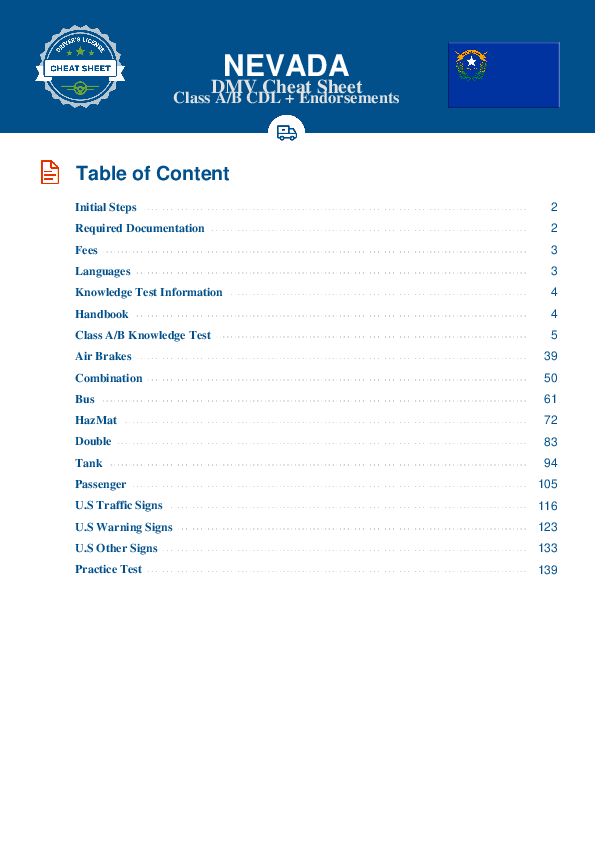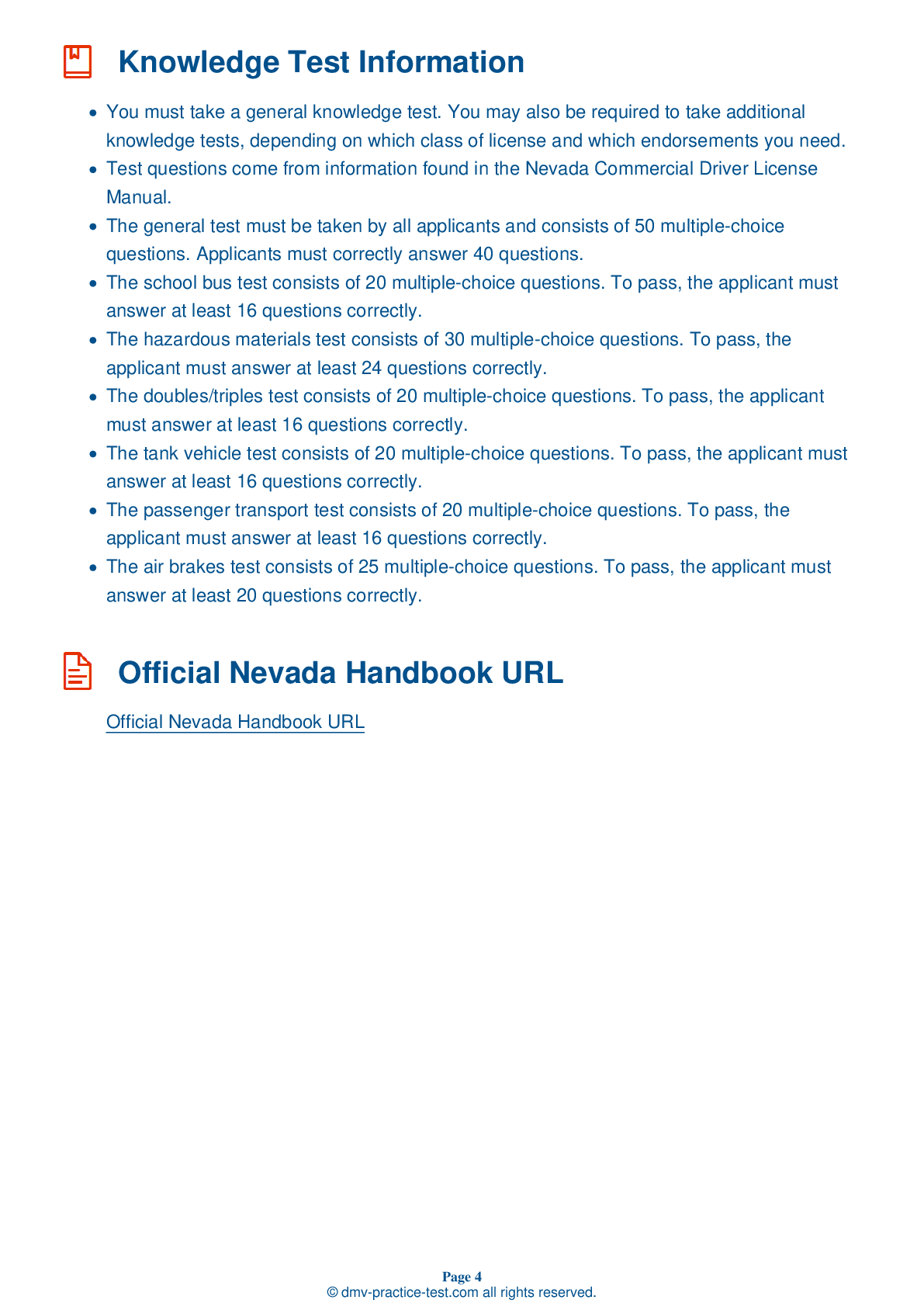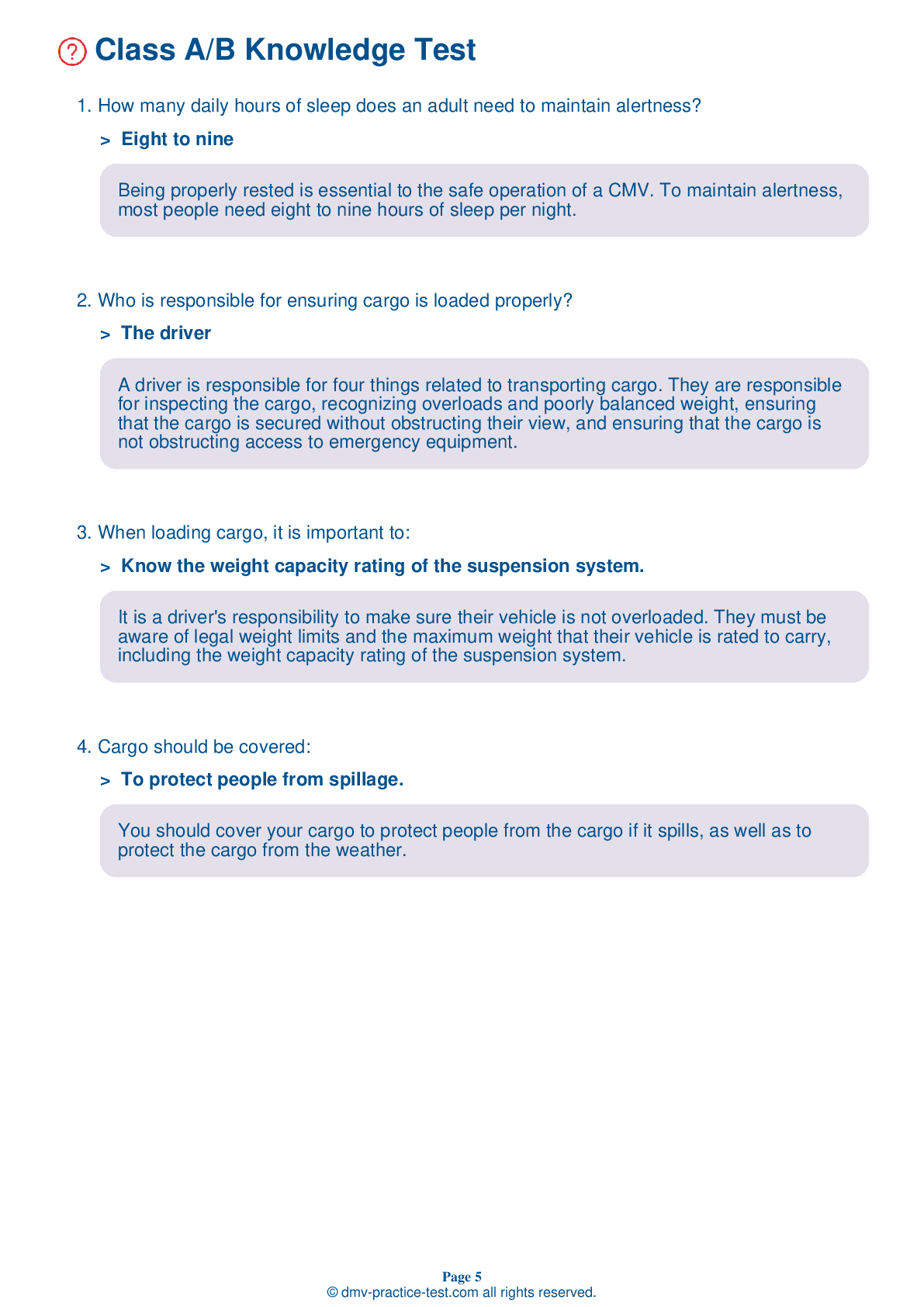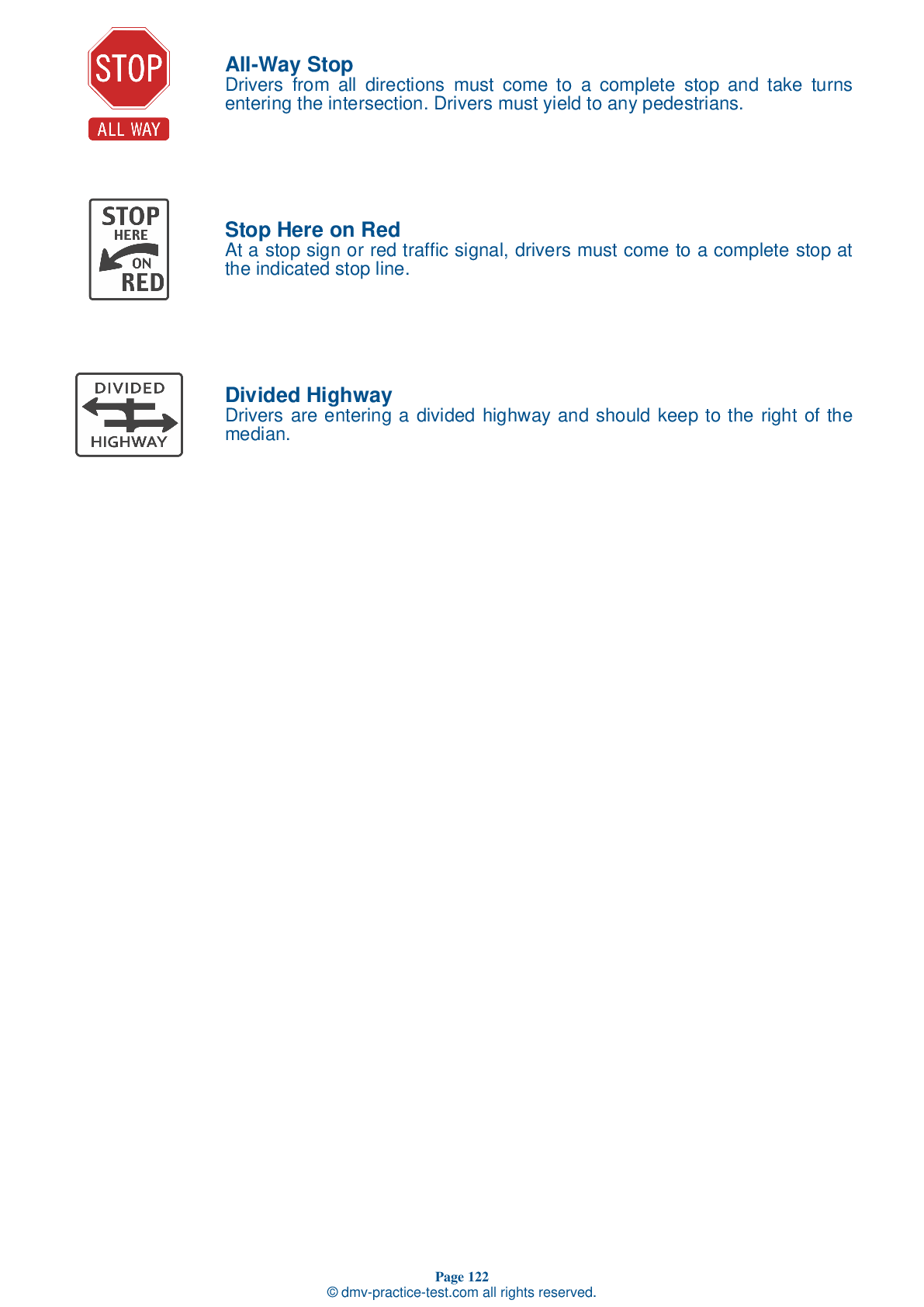Combination Vehicles Practice Test | Nevada 2025 #2 Page 3 of 3
Train for FREE online with our Nevada CDL combination vehicle test. The official exam test consists of several obligatory parts, with all of them checking your knowledge of different blocks of road rules. If you need to obtain a NV combination license in 2025, practice as much as possible. Free sample tests published on our website will help you check and improve your knowledge and boost your grades. Please bear in mind that DMV requirements for issuing a combination license may vary from state to state.
15 . If your vehicle gets stuck on railroad tracks, you should:
If your vehicle gets stuck on railroad tracks for any reason, you should immediately exit the vehicle and walk away from the tracks. Contact the proper emergency authorities.
16 . When driving a combination rig, following distance should be:
In comparison to driving a single vehicle, you should maintain an extended following distance when driving a combination rig. Combinations require longer stopping distances than smaller vehicles.
17 . If colors are being used to distinguish glad hands, which color is used for service lines?
When trailer air lines are color-coded, the service lines are generally blue and the emergency lines are generally red.
18 . When backing up while coupling a trailer, the tractor should be positioned:
When backing up to couple a trailer, you should position the tractor directly in front of the trailer. Trying to couple while backing at an angle could cause the trailer to move and the landing gear to break.
19 . A tractor protection valve is:
On combination vehicles with air brakes, the tractor protection valve keeps air in the tractor or truck brake system, should the trailer develop a bad leak or break away from the tractor.
20 . When a combination vehicle goes around a corner:
When a vehicle goes around a corner, the rear wheels follow a different path than the front wheels. This is called off-tracking. This effect is especially pronounced on vehicles with trailers.
See the exact questions that will be on the 2025 Nevada DMV exam.
99.2% of people who use the cheat sheet pass the FIRST TIME
Lillian MCcranie explains how our CDL study guide was helpful in passing the exam and recommends it to everyone.
Cameron tells us how he purchased the CDL exam, and found it to be a useful tool which helped him pass the exam and find a job.



